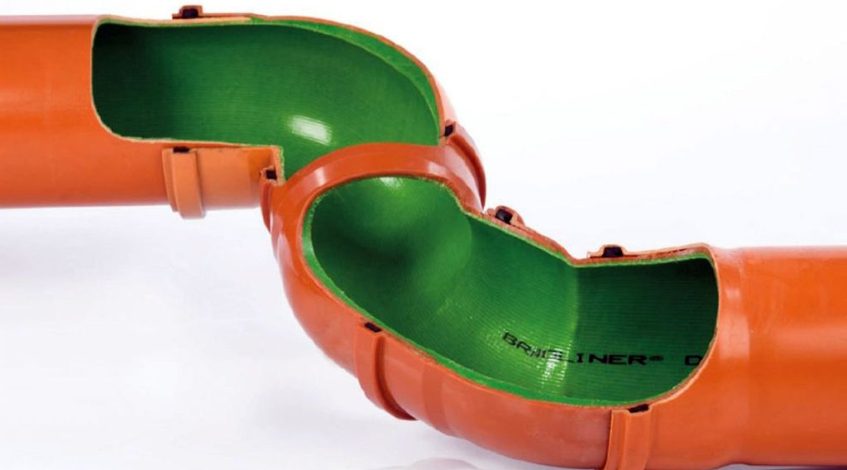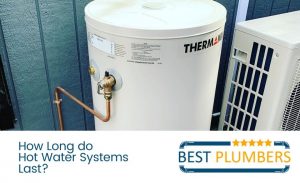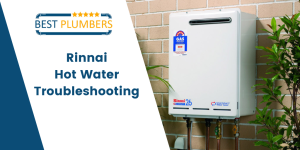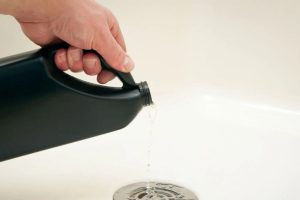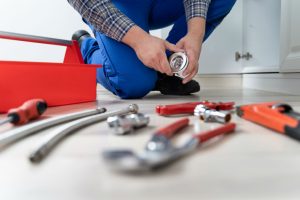Thinking about old pipes can make any homeowner nervous. Digging up a yard feels costly and slow, which raises the big question: is pipe relining worth it in Australia? Most people want a fix that lasts, with less mess and less stress.
Pipe relining is a no-dig method used to repair drains and sewer lines. It suits homes in Sydney, Brisbane, Melbourne and beyond. Plumbers and property owners alike weigh up cost, speed, and the impact on the property, along with disruption to tenants or family life. If a method saves time and protects landscaping, it quickly stands out as the smarter choice.
Caspar from Brisbane Flow Plumbing points to speed and minimal disruption:
“Most relines are done in a day, so families can use the bathroom that night. No trenches through tiles or driveways, that’s where the value is.”
He also stresses the role of CCTV in deciding:
“If the pipe holds shape, we reline. If it’s crushed or badly sagged, you still need excavation. The camera footage tells the story.”
Caspar’s tip for choosing a plumber is straightforward:
“Always ask for CCTV evidence, scope details, and mention of WSAA or ASTM F1216. If those aren’t there, walk away.”
This guide highlights what matters before booking a relining job. It covers value, durability, and the right situations for relining, giving homeowners the confidence to make an informed decision.
What is pipe relining and how it works
Pipe relining is a no-dig method that creates a new pipe inside an existing one. It works by inserting a resin-saturated liner and curing it in place. This technique is widely applied to drains and sewers beneath homes, driveways, and gardens across Australia.
- Inspect: Plumbers first run a CCTV drain camera to map defects such as cracks, root intrusion, and offsets.
- Clean: The host pipe is cleared with jetting or milling to remove scale, roots, and debris.
- Line: A felt or fibreglass liner saturated with epoxy or silicate resin is inverted or pulled into position.
- Cure: The liner is hardened using ambient air, hot water, or steam to form a structural pipe.
- Reinstate: Junctions are reopened with a robotic cutter to restore connections and smooth flows.
- Verify: A post-reline CCTV survey is recorded to confirm service, grade, and workmanship.
The materials and methods used are carefully selected to comply with Australian standards and water authority requirements. Designs align with ASTM F1216 for CIPP, WSAA Sewerage Code WSA 02-2014, and local approvals from Sydney Water and comparable utilities, ensuring long-term structural integrity and reliable performance.
Key facts for pipe relining in Australia
Metric | Typical value | Source |
|---|---|---|
| Residential diameters | 75-225 mm | WSAA WSA 02‑2014 |
| Host pipe materials | Earthenware, PVC‑U, AC, and CI | WSAA WSA 02‑2014 |
| Cure time | 1-4 h with steam or hot water | ASTM F1216 |
| Return to service | Same day in most jobs | Sydney Water rehabilitation guidance |
| Structural class | Full or semi‑structural per design | ASTM F1216, WSAA |
| Expected service life | 50+ years with correct design | ASTM F1216 testing reports |
Small access points or existing openings are used, which avoids the need for excavation across lawns and paths in Sydney, Brisbane, and Melbourne. The relined pipe achieves a smooth internal finish that not only improves flow but also resists future root ingress. Compliance records and test results are documented in the handover pack, ensuring property owners have a clear record of the completed work.
Is pipe relining worth it in Australia?
I assess pipe relining against excavation for Australian homes and strata. I focus on cost, lifespan, compliance, and disruption across city and regional contexts.
Evaluating pipe relining for Australian homes and strata
Pipe relining is considered worthwhile for most blocked or cracked drains in Australian clay, cast iron, and PVC host pipes, provided the line is repairable after thorough cleaning and CCTV inspection. Relining is often prioritised in dense suburbs across Sydney, Melbourne, and Brisbane, where access is limited and reinstatement costs are high. Sectional or full-length relining is typically favoured for issues such as root ingress and joint leaks, provided the host pipe maintains its structural shape. Spot dig replacement is recommended for collapsed pipes or severe deformation where CCTV shows ovoid or broken segments beyond lining tolerance.
The value of relining is measured by certified lifespan, rapid return to service, and preservation of surface finishes. Industry practice references the WSAA Sewerage Code and institutional specifications that recognise CIPP relining with design life targets exceeding 50 years when installed to standard. These include ISO 11296 and ASTM F1216 equivalents adopted locally (WSAA, AS/NZS 3500, Sydney Water). The total project cost is assessed holistically, taking into account not only relining but also demolition, reinstatement, and downtime.
Factor | Pipe Relining (CIPP) | Traditional Dig And Replace | Source |
|---|---|---|---|
| Typical residential cost per metre | AUD 400-1,000 | AUD 800-2,000 | Industry pricing guides, major contractors |
| Typical project duration | 1-2 days | 3-7 days | Contractor programs, council permits |
| Surface reinstatement | Minimal | High | Sydney Water customer guidance |
| Expected design life | 50+ years | 50+ years | WSAA, AS/NZS 2566, ISO 11296 |
| Cure time (steam or UV) | 1-4 hours | Not applicable | Manufacturer data, ASTM F1216 practice |
| Pipe diameters commonly lined | 75-225 mm | 75-300 mm | Residential CCTV and lining service scopes |
Residential CCTV and lining service scopes
I confirm relining value when reinstatement risks include tiles, driveways, mature trees, or heritage fabric. I adjust scope for junctions and boundary traps if water authority approvals require junction cutouts and post-lining verification per local conditions of connection.
Key benefits and drawbacks
- Cost: Pipe relining reduces overall expenditure on complex digs where reinstatement inflates budgets, particularly beneath slabs and landscaped areas, in line with Sydney Water guidance.
- Time: Services are typically restored within 1-2 days, with same-day curing in many cases. This is especially beneficial for tenanted properties and strata stacks.
- Disruption: Excavation is avoided, surfaces are preserved, and noise and dust are limited to preparation and curing phases.
- Longevity: When design, material, and curing meet WSAA and AS/NZS criteria – including proper thickness and modulus – performance targets of 50+ years are achievable.
- Flow: Internal hydraulics are improved with a smooth liner that reduces friction losses and resists root ingress at former joints.
- Compliance: Works align with CCTV inspections before and after relining. Liner specifications and curing logs are documented, and water authority acceptance tests are met where required.
- Access: Relining can be completed through inspection openings or boundary traps, reducing the need for machinery on tight urban lots.
- Limits: Dig and replacement are recommended if the host pipe is collapsed or misaligned beyond ovality limits, or where the grade is inadequate and requires re-levelling.
- Variability: Additional costs may apply for multiple junction reinstatements, bends, and long runs. Night work in CBDs may also be required if access windows are restricted.
Costs in Australia: Relining vs replacement
Let’s compare relining and excavation in Australian conditions, using city contexts like Sydney, Brisbane, and Melbourne.
Price drivers and typical ranges
- Diameter: Larger diameters raise liner and resin volumes, for example, 100 mm vs 150 mm.
- Length: Longer runs increase labour and curing time, for example, 6 m vs 20 m.
- Access: Restricted access adds cutting and entry works, for example, internal stacks or deep shafts.
- Junctions: Multiple junction reinstatements add robot time, for example, 2-4 cuts per line.
- Condition: Deformation, fractures, and offsets demand heavy cleaning and patching.
- Location: Driveways, tiled areas, and heritage gardens inflate reinstatement.
- Compliance: WSAA and water authority approvals add CCTV, tests, and reports.
Costs and durations in typical residential scenarios:
Item | Typical range | Unit | Context |
|---|---|---|---|
| Pipe relining 50-150 mm | 300-1,000 | AUD per metre | Residential drains |
| Typical relining job | 2,000-8,000 | AUD total | 1-2 lines, 6-12 m |
| Open-trench replacement | 400-800 | AUD per metre | Excluding reinstatement |
| Reinstatement allowance | 1,500-10,000 | AUD total | Concrete, paving, landscaping |
| Project duration relining | 0.5-1.5 | days | Access dependent |
| Project duration replacement | 2-5 | days | Trench, backfill, cure |
Citations: CHOICE.
- Pipe relining: how it works and how much it costs. 2022. https://www.choice.com.au/home-improvement/plumbing/drain-cleaning-and-repairs/articles/pipe-relining
Long-term savings and ROI
- Lifespan: Relining liners target a 50-year design life under WSAA acceptance criteria if installed to code.
- Lifespan: New PVC-U gravity sewer pipes carry a 100-year design life under Australian guidance if installed to code.
Service life and standards:
Attribute | Relining CIPP | Open-trench PVC-U |
|---|---|---|
| Design life | 50 years | 100 years |
| Standards anchor | WSAA rehabilitation guidance | PIPA technical guidance |
| Key compliance | CCTV, leak tests, ovality checks | Bedding, compaction, alignment |
Citations:
- WSAA. Conduit Condition Evaluation and Rehabilitation Guidance. WSAA codes reference. https://www.wsaa.asn.au
- PIPA. PVC Pipe Longevity and Design Life Technical Notes. https://www.pipa.com.au
Illustrative ROI snapshot:
Scenario | Relining | Replacement |
|---|---|---|
| 10 m of 100 mm under a driveway | 6,000 AUD | 4,000 AUD trenching plus 3,500 AUD reinstatement |
| Downtime cost for a rental property per day | 0-1 day at 0–300 AUD | 2-4 days at 600-1,200 AUD |
| 10-year maintenance allowance | 0-800 AUD jetting | 0-800 AUD jetting |
| 10-year total outlay | 6,000-7,100 AUD | 8,100-9,500 AUD |
Interpretation: Relining often lowers the whole-of-project cost in hard-access sites, and replacement often aligns in cost in open ground.
Suitability: When relining works and when it doesn’t
Pipe relining suits many Australian drains in built-up sites and heritage surfaces. Let’s map where it works, and where excavation remains smarter.
Ideal use cases and materials
Ideal use cases and materials centre on functional pipes with isolated defects, common diameters, and compatible substrates.
- Works in typical house drains, 100-225 mm, if the host pipe carries flow and holds line and grade
- Works in stacked internal pipes, 80–150 mm, if access from a clean-out or roof vent exists
- Works under driveways, tiles, decks, and gardens, if surface reinstatement costs exceed access costs
- Works for infiltration and blockages from roots, if cracks, joints, and intrusions remain localised
- Works for junction-heavy runs, 3–8 connections per 20 m, if robotic cutters can reinstate openings
- Works across bends, 1–2 bends at 45°, if the liner and calibration tube match geometry
- Works for CCTV-verified defects, grades ≥1%, if deformation sits below 20%
- Fits vitrified clay and earthenware pipes, common in pre‑1990 homes, if fractures and joint gaps show on CCTV
- Fits asbestos cement mains and laterals, 100–225 mm, if wall loss stays low and fibres remain bonded
- Fits cast iron stacks and laterals, 80–150 mm, if tuberculation gets removed with mechanical cleaning
- Fits PVC‑U and uPVC lines, 100–150 mm, if longitudinal cracks or displaced joints appear
- Fits concrete and fibre‑reinforced concrete, 150–225 mm, if corrosion stays shallow
Source references include WSAA Sewerage Code WSA 02‑2014 for condition grading and junction reinstatement practices, AS/NZS 3500 for plumbing access provisions, AS/NZS 2566.1 for structural design of buried flexible liners, and ASTM F1216 for CIPP design life and testing.
Limitations and deal-breakers
Limitations and deal-breakers arise where structural loss, geometry, or service risks exceed liner capability.
- Fails where pipe collapse or ovality exceeds 40%, if CCTV shows sags, voids, or crushed sections
- Fails where long sags hold water over 20% of the diameter, if grade correction by lining alone proves impossible
- Fails where offsets exceed half the pipe wall, if ends no longer align for liner bridging
- Fails where large holes, over 30% wall, open into soil, if bypass or spot repair cannot stabilise the host
- Fails where ongoing ground movement persists, if tree loading or subsidence remains active
- Fails where diameter changes are frequent, more than 3 per 20 m, if transitions lack smooth reducers
- Fails where chemical attack continues, strong acids or trade waste, if resin compatibility is not verified
- Fails where access proves impractical, no launch pits or openings, if lengths exceed pull or inversion limits
- Fails where live connections cannot be reinstated safely, gas or high‑pressure services nearby, if clearance falls short
- Fails where authority approvals restrict lining, if water utility standards require replacement for specific defects
Evidence and thresholds align with WSAA WSA 02 condition grades 4-5 for severe defects, Sydney Water specifications for sewer rehabilitation acceptance, and ASTM F1216 Annex guidelines for host pipe stability and resin compatibility.
Suitability metric | Typical threshold | Notes |
|---|---|---|
| Common relining diameters | 80-225 mm | Residential house drains, stacks, laterals |
| Acceptable deformation | ≤20% | Above 40% counts as a deal‑breaker |
| Acceptable ponding | ≤10% diameter | Over 20% indicates grade failure |
| Typical junction count | 3-8 per 20 m | Robotic reinstatement feasible |
| Bend allowance | Up to 2 × 45° | Geometry dependent on liner system |
| Design life, CIPP | 50 years | Per ASTM F1216 testing, adopted by WSAA |
| CCTV grading target | Grades 1-3 | Grade 4–5 often needs excavation |
These limits are based on Australian codes and utility practices, including WSAA WSA 02, AS/NZS 2566.1, AS/NZS 3500, and public utility rehabilitation specifications issued by major water authorities across Australia.
Standards, warranties and local conditions
Relining plans are anchored in Australian standards, warranties, and site conditions. Materials and methods are matched to the pipe, the soil, and the utility’s requirements.
Australian codes, tree roots and soil types
Designs and quality assurance are aligned with national and utility codes for relining and testing.
- AS/NZS 3500.2 sanitary drainage: Used for layout, gradients, and fixtures, with CCTV grades and junction reinstatements verified against the as-built.
- WSAA WSA 02 sewerage code: Applied to property connection sewers, with structural performance and infiltration tested to utility limits.
- WSA 05 conduit inspection code: Adopted for CCTV coding and defect grading, with pre- and post-surveys documented for acceptance.
- ASTM F1216 and ISO 11296-4: Followed for CIPP liner performance, confirming resin cure, thickness, ovality, and long-term modulus.
- AS/NZS 4020: Applied for potable linings only, using certified resins on water service relines.
Local utility conditions are followed at private-to-public interfaces.
- Utility engagement: Approvals are obtained from Sydney Water, Urban Utilities, Yarra Valley Water, SA Water, or Water Corporation WA before lining across connection points.
- Asset isolation: Boundary traps, silt pits, overflow relief gullies, and property connection sewers are isolated while maintaining hydraulic function and venting.
- Acceptance testing: CCTV and pressure or air tests are lodged where required, with acceptance packages submitted in the authority’s format.
Tree roots and soil conditions are factored into structural checks and resin cure.
- Tree roots: Aggressive ingress from eucalyptus, ficus, jacaranda, and paperbark is countered with continuous CIPP liners, sealed ends, and robotic reinstatements.
- Reactive clays: Western Sydney and Melbourne’s basalt clays require higher design modulus liners and flexible bonds at junction cuts.
- Coastal sands: Found in Perth and Brisbane, these soils demand improved cleaning and pre-lining stabilisation.
- High groundwater: In river flats and bayside suburbs, infiltration risks are managed with bypass pumping and vacuum control during curing.
Warranties are set to reflect product certification, installer accreditation, and site risk.
- Product warranties: 25-50 years from liner manufacturers on CIPP systems tested to F1216 or ISO 11296-4, tied to thickness, cure logs, and service temperature.
- Workmanship warranties: 10-25 years for residential relines from licensed contractors, linked to maintenance, water authority approvals, and CCTV handover.
- Transferable warranties: Registered on strata and commercial assets, recorded with asset IDs, chainages, and drawings to remain valid when ownership changes.
Key references and typical values
Reference or authority | Scope | Typical requirement or metric | Source |
|---|---|---|---|
| AS/NZS 3500.2:2021 | Sanitary plumbing and drainage | Grades, venting, overflow relief, as-built compliance | Standards Australia |
| WSAA WSA 02-2014 | Sewerage Code of Australia | Property connection sewers, acceptance testing, infiltration limits | Water Services Association of Australia |
| WSA 05-2020 | Conduit Inspection Reporting | CCTV coding, defect grading, reporting format | WSAA |
| ASTM F1216-21 | CIPP for sewers | Design thickness, long-term modulus, testing regime | ASTM International |
| ISO 11296-4:2018 | Plastics piping renovation with CIPP | Materials, design, installation, testing | ISO |
| AS/NZS 4020:2018 | Products for use in contact with drinking water | Leachate limits, odour and taste, cytotoxicity | Standards Australia |
| Warranty period | CIPP liner product | 25-50 years when installed to spec | Manufacturer terms, F1216/ISO test data |
| Warranty period | Contractor workmanship | 10-25 years residential, 10-20 years commercial | Contractor terms, utility approvals |
- Standards Australia, AS/NZS 3500.2:2021 Sanitary plumbing and drainage
- Water Services Association of Australia, WSA 02-2014 Sewerage Code of Australia, and WSA 05-2020 Conduit Inspection Reporting
- ASTM International, ASTM F1216-21 Standard Practice for Rehabilitation of Existing Pipelines and Conduits by the Inversion and Curing of a Resin-Impregnated Tube
- International Organization for Standardization, ISO 11296-4:2018 Plastics piping systems for renovation of underground non-pressure drainage and sewerage networks
- Standards Australia, AS/NZS 4020:2018 Testing of products for use in contact with drinking water
How to choose a trusted relining specialist
Finding a reliable relining specialist comes down to checking credentials, understanding the scope, and knowing what warranties are on offer. A good quote should reflect Australian standards and follow the rules set by local water authorities.
Quotes, scoping and red flags
- Confirm licensing and accreditation. Confirm state trade licences for drainage, for example NSW Fair Trading, QBCC Queensland, VBA Victoria. Confirm training on CIPP per ASTM F1216 and compliance with AS/NZS 3500.2 and WSAA Sewerage Code WSA 02.
- Request full-scoped CCTV. Request pre- and post-CCTV with narrated defects to WSA 05 coding and a georeferenced plan if the line crosses a boundary.
- Specify measurable inclusions. A reliable quote should set out clear, measurable details so expectations are transparent from the start. This means specifying the length in metres, the pipe diameter in millimetres, the liner type (such as felt or fibreglass), the resin type (such as epoxy or silicate), and the cure method (whether hot water, steam, or UV). It should also include the number of reinstatements, the types of junction cuts, and any site reinstatement that will be carried out.
- Verify design calculations. Verify thickness design per ASTM F1216 Appendix X1 and host pipe condition per WSA 02 acceptance.
- Ask for QA records. Ask for batch numbers, cure logs, ambient and liner temperatures, pressure or UV dose, and calibration tube use.
- Check product certification. Check WaterMark where applicable and manufacturer data sheets for chemical resistance against sewage and hot water per AS 4020 contact.
- Compare warranties in writing. Compare install warranties, for example, 20-50 years against the liner manufacturer’s backing and transfer terms for strata or resale.
- Require utility approvals. Require Sydney Water, Urban Utilities, or SA Water approvals if the asset is in a sewer main or an easement.
- Confirm service reinstatement. Confirm junction reinstatement with robotic cutters and post-cut CCTV for every reopened branch.
- Insist on access method clarity. Insist on access points, for example, boundary traps or inspection openings and contingency for restricted access sites.
- Validate price transparency. Validate unit rates per metre, junction costs, additional cleaning rates, and traffic control or night works if on public land.
- Flag risky practices. Flag no CCTV evidence, generic one-line quotes, cash-only terms, no standards cited, and promises of one-day fixes for collapsed mains.
- Plan for future maintenance. Plan cleaning methods post-reline and confirm no metal cutters on liners and jetting pressure limits, and root control policy.
Key benchmarks and compliance anchors
Item | Typical range or requirement | Source |
|---|---|---|
| Residential diameter | 100–150 mm house drains | AS/NZS 3500.2 |
| Liner design life | 50 years design intent for CIPP | ASTM F1216 |
| Cure verification | Temperature or UV dose logs retained | Manufacturer QA manuals |
| Warranty term | 20–50 years installer backed | Installer documentation |
| CCTV coding | WSA 05 condition coding | WSAA WSA 05 |
| Acceptance standard | Installation and testing to WSA 02 | WSAA WSA 02 |
| Typical residential reline cost | $300–$600 per metre for 100–150 mm lines | Market surveys Australia 2023–2025 |
| Post-reline test | CCTV survey and flow check | Utility guidelines |
- Standards Australia AS/NZS 3500.2 Sanitary plumbing and drainage
- ASTM F1216 Standard practice for rehabilitation of existing pipelines and conduits by CIPP
- WSAA WSA 02 Sewerage Code of Australia and WSA 05 Conduit Inspection Reporting Code
- NSW Fair Trading Contractor Licence, Plumbing and Drainage, QBCC Trade Contractor Licence, VBA Plumbing Registration
Conclusion
Pipe relining can be a smart path when a lasting fix is needed without tearing up a home. The real value shows when access is tight, surfaces matter, and downtime causes disruption. If the host pipe still has workable structure and the site is tricky, relining often comes out ahead.
The advice is simple: get a full CCTV diagnosis, ask for clear scope notes with measurable inclusions, and check installer accreditation and warranties that align with Australian standards. If quotes look vague or evidence is thin, it’s best to look elsewhere.
Not sure where to begin? A good first step is to check out Best Plumbers Club. They’ll connect you with trusted local plumbers who can walk you through the options and give you the right advice. With the right specialist on the job and a clear plan in place, you’ll have your drains sorted quickly – without the stress or surprise costs.

